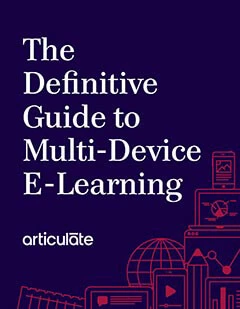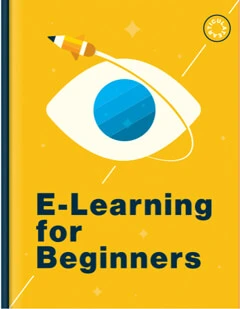Storyline 3: How to Add YouTube Videos
Article Last Updated
This article applies to:
There are two ways to add YouTube videos to Articulate Storyline 3 courses. You can embed them as website videos or web objects. We'll cover both methods in this article.
If you don't need to add any special functionality to your YouTube videos, use the website video method. It's easiest. On the other hand, if you need to change the behavior of your videos, such as specifying when to start/stop or hiding suggested videos, use the web object method and add one or more optional parameters to each web object.
- How to Embed YouTube Videos as Website Videos
- How to Embed YouTube Videos as Web Objects
- Optional Parameters for YouTube Web Objects
How to Embed YouTube Videos as Website Videos
- Go to the Insert tab on the Storyline ribbon, click the Video drop-down arrow, and choose Video from Website.
- Copy the video embed code from YouTube and paste it into the Insert Video from Website box.
- Click Insert.
Tips:
• Website videos can't be previewed. You'll need to publish your course to see your YouTube video.
• If you don’t see the website video in your published output, check out this article.
How to Embed YouTube Videos as Web Objects
To add a YouTube web object to your course, you just need the ID of your YouTube video, which is the 11-character alphanumeric string in the video's URL.
- Go to the Insert tab on the Storyline ribbon and click Web Object.
- Type the following URL into the Address field. Replace video_id with the ID of your YouTube video.
https://www.youtube.com/embed/video_id
- If you want to add special parameters to your video, just add a question mark (?) to the end of the URL followed by your parameters. If you add more than one parameter, separate them with ampersands (&).
For example, this URL would automatically play the video and start it at the 45-second mark:
https://www.youtube.com/embed/video_id?autoplay=1&start=45
- Click OK to add the YouTube web object to your course.
Tips:
• Web objects can't be previewed. You'll need to publish your course to see your YouTube video.
• If you don’t see the web object in your published output, check out this article.
Optional Parameters for YouTube Web Objects
Here's a list of optional parameters that work with YouTube web objects, including brief descriptions and acceptable values. See Google's official documentation for more information.
|
autoplay |
This parameter determines whether the video will automatically start playing or learners must click the video to start playing it.
|
|
cc_lang_pref |
This parameter determines the default language for closed captions. Set the parameter's value equal to an ISO 639-1 two-letter language code. |
|
cc_load_policy |
This parameter determines whether or not closed captions will be displayed by default.
Captions will only display if they've been added to the YouTube video. You can add captions to the video through your account at YouTube.com for videos that you own. If you don't own the video you're embedding, the cc_load_policy parameter will only display captions if the owner has already added them to the video. |
|
color |
This parameter determines the color of the video's progress bar.
|
|
controls |
This parameter determines whether or not the controls will be displayed.
If you choose not to display the controls, you can still play/pause the video by clicking it. |
|
disablekb |
This parameter enables or disables keyboard controls for the video.
Keyboard controls are:
|
|
end |
This parameter determines when the video will stop playing. It's measured in seconds from the beginning of the video. For example, if you want the video to stop at 2 minutes and 12 seconds, the parameter would be |
|
hl |
This parameter sets the interface language for the YouTube player. The interface language is used for tooltips (when you hover over player features) and closed captions/subtitles. This parameter accepts two-letter and four-letter language codes. For example, |
|
iv_load_policy |
This parameter determines whether or not annotations will display.
|
|
loop |
This parameter determines whether or not the video will automatically replay.
Note: The loop parameter requires that you also use the playlist parameter. Set the playlist parameter equal to your video ID. Here's the URL format for a looping video:
|
|
modestbranding |
This parameter lets you remove the YouTube logo/button from the video controls. (A small YouTube link will still display in the upper right corner when the video is paused.)
Note: The YouTube logo/button lets learners launch the video in a separate window at the YouTube.com website, which may not be desirable if you want them to be free from distractions. |
|
playlist |
This parameter lets you specify a comma-separated list of YouTube video IDs, which will play back-to-back in the same video player. Here's the format for the playlist parameter:
|
|
playsinline |
This parameter determines whether YouTube videos play inline or fullscreen on iPhones running iOS 10 and later. See this article for details.
|
|
rel |
This parameter determines which related videos will be suggested at the end of the video.
|
|
start |
This parameter determines where the video will start playing on the timeline. It's measured in seconds from the beginning of the video. For example, if you want the video to start playing at 1 minute and 30 seconds, the parameter would be |


